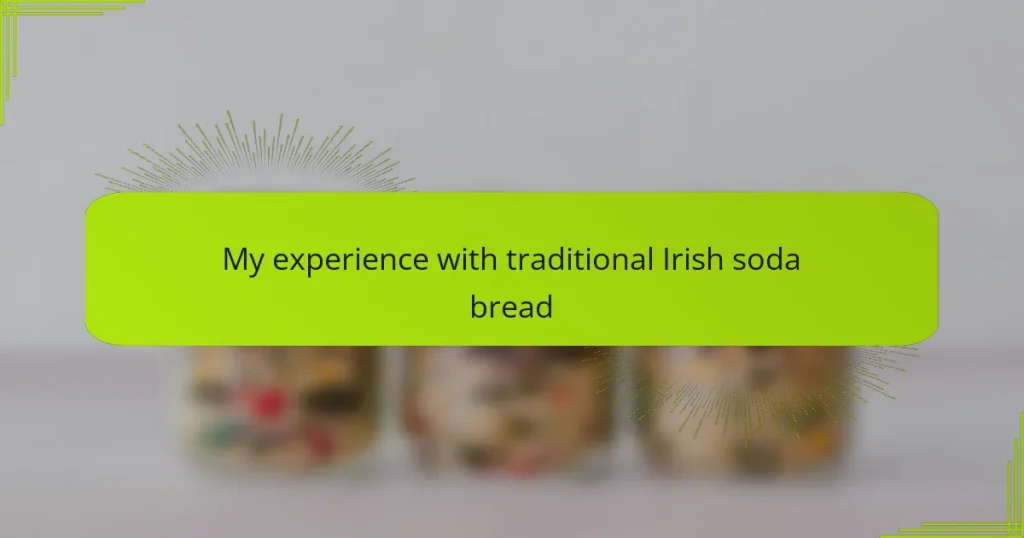Key takeaways
- Irish soda bread is a simple, yeast-free recipe made with flour, baking soda, salt, and buttermilk, reflecting a rich tradition and accessibility in baking.
- The baking process involves straightforward steps that emphasize minimal handling and the importance of ingredient temperature and timing for optimal results.
- Variations such as adding raisins, caraway seeds, or using wholemeal flour provide new textures and flavors, keeping the recipe fresh and enjoyable.
- Serving suggestions include pairing with creamy butter, hearty soups, or sweet toppings like jam for a comforting and versatile experience.
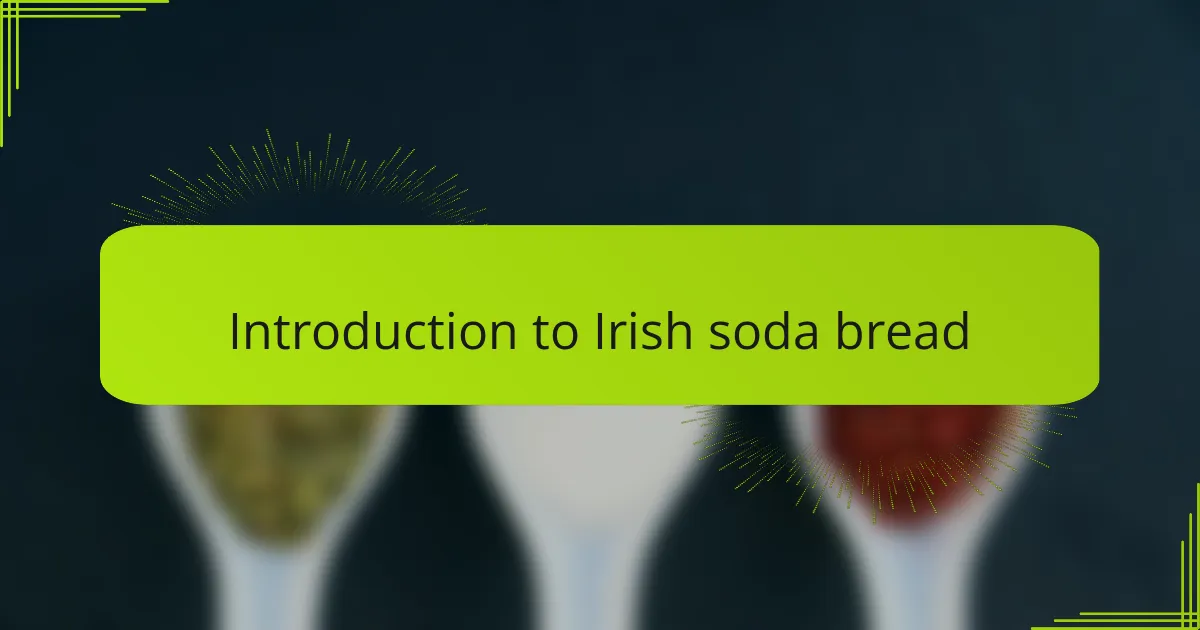
Introduction to Irish soda bread
Irish soda bread has always held a special place in my kitchen, not just as a recipe but as a slice of history. Made without yeast, it relies on baking soda and buttermilk for its rise, which makes it uniquely simple yet delicious. Have you ever wondered how such basic ingredients can create something so comforting and hearty?
What fascinates me most is the bread’s rustic nature—it’s a recipe that feels like it’s been passed down through generations, each one adding a bit of their own story. I remember the first time I baked it; the smell that filled my home instantly transported me to a cozy Irish cottage. Don’t you love how certain foods carry that kind of nostalgic warmth?
Irish soda bread isn’t just about tradition; it’s about accessibility. With its straightforward ingredients and quick preparation, it welcomes bakers of all levels to try their hand and enjoy a genuine taste of Ireland. Have you tried baking something so simple yet so rich in character?
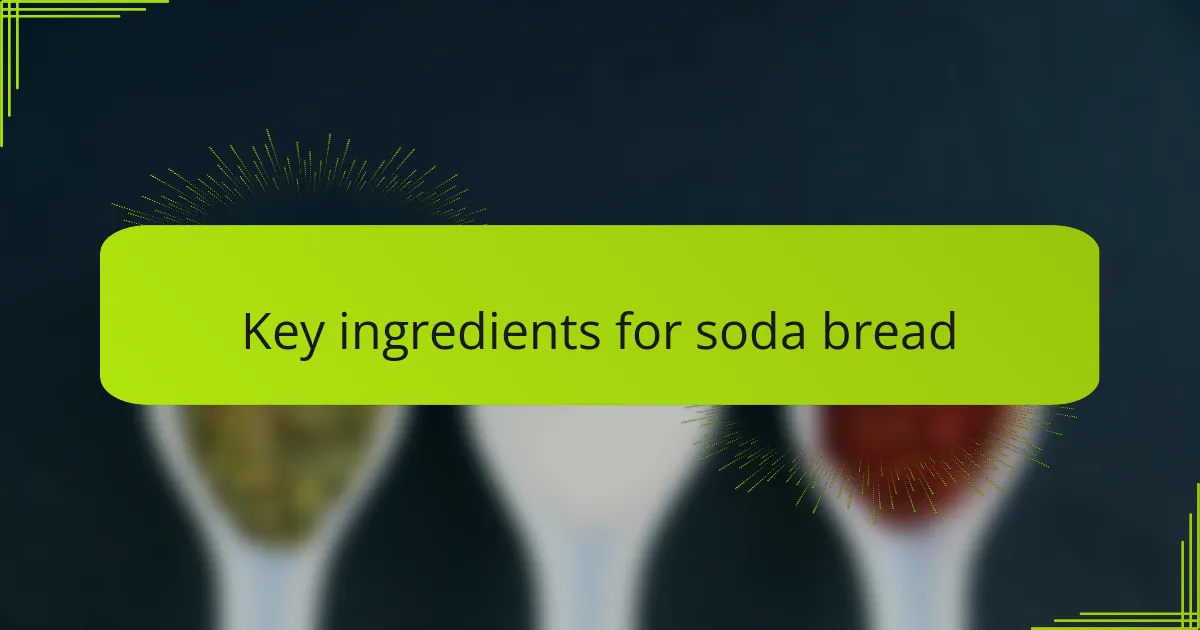
Key ingredients for soda bread
The heart of soda bread lies in four simple ingredients—flour, baking soda, salt, and buttermilk. I was amazed at how these humble items, easily found in any pantry, come together to make such a delightful loaf. Have you ever stopped to think how the alkaline baking soda reacts with the acidity of buttermilk to create that perfect rise without any yeast?
Salt might seem like a small addition, but I’ve learned it’s essential to balance flavors and bring out the bread’s subtle sweetness. I remember my first attempt where I underestimated the salt; the bread tasted flat, teaching me how crucial every ingredient truly is. It makes me wonder how often we overlook these basics in our baking adventures.
Flour is, of course, the foundation, and choosing the right type can influence the texture. I usually go for plain all-purpose flour, which provides the right heft and tenderness. Have you noticed how this bread’s crumb is denser yet still tender? That’s where the interplay of these ingredients really shines.
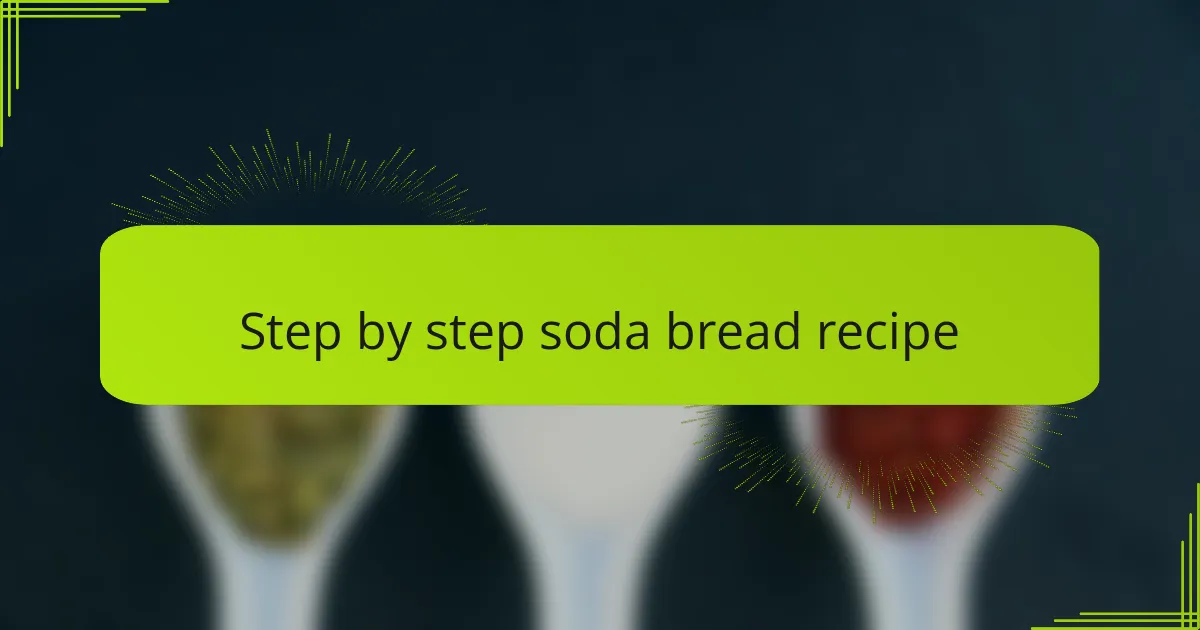
Step by step soda bread recipe
When I start making traditional Irish soda bread, the first step is always sifting the flour with the baking soda and salt. It sounds simple, but I’ve found this early action sets the tone—the dry ingredients blend smoothly, making it easier to incorporate the buttermilk evenly. Have you ever noticed how just mixing these powders creates a kind of magic base for the dough?
Next comes adding the buttermilk, which I pour in gradually while folding the mixture with a wooden spoon. I’ve learned not to overwork the dough; just enough to bring it together into a rough ball is perfect. One time, I kept kneading, hoping for a softer loaf, but instead, it turned dense—so now I trust the simplicity of minimal handling.
Forming the dough into a round loaf, I press a deep cross on top, which isn’t just tradition but practical—it helps the bread cook evenly and splits beautifully once baked. Placing it on a baking tray and sliding it into a hot oven, I always feel a wave of anticipation. The smell that fills the kitchen makes the wait worth every minute. Don’t you think certain steps become comforting rituals in baking?
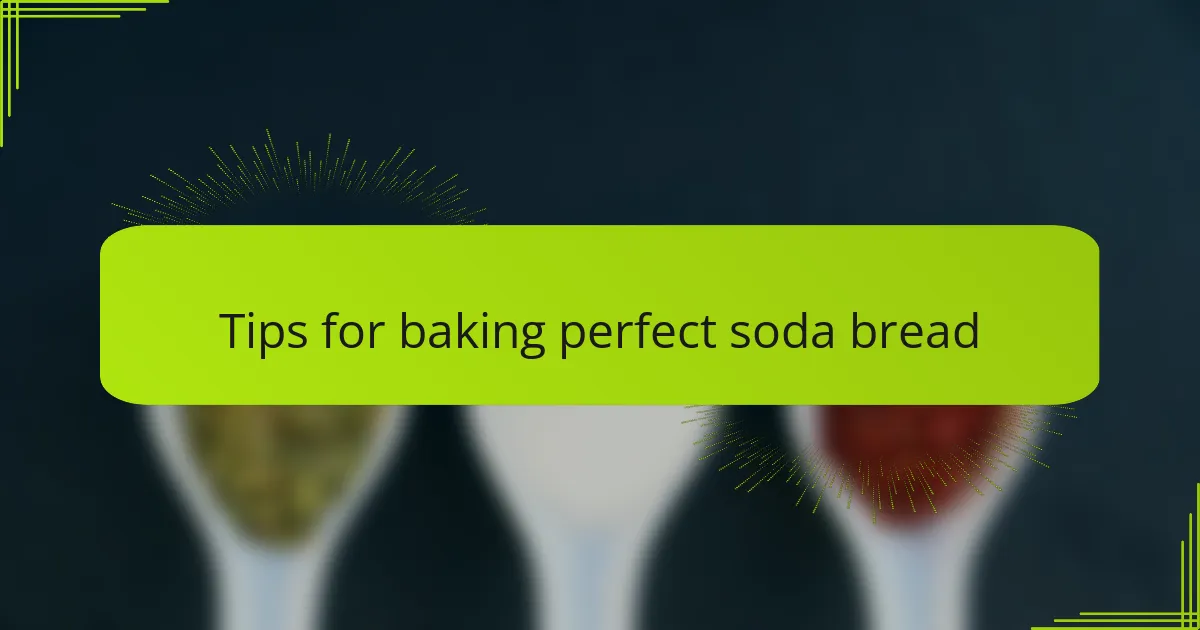
Tips for baking perfect soda bread
One thing I’ve learned is that temperature plays a surprisingly big role in the outcome. I used to grab any cold buttermilk from the fridge, but when I let it come closer to room temperature, the dough felt more pliable and the bread turned out lighter. Have you ever thought about how small temperature tweaks can make such a difference in baking?
Timing in the oven is another subtle art. I once pulled my soda bread out too early, eager to taste it, only to find it a bit doughy inside. Now, I tap the bottom of the loaf—it should sound hollow. This simple test has saved me from underbaking more times than I can count. Isn’t it amazing how a little patience rewards you with that perfect crust and tender crumb?
Lastly, don’t rush the mixing. I remember trying to speed through the process and ended up with a tough loaf. Treating the dough gently, folding just enough to bring it together, keeps the bread tender and light. Have you noticed that sometimes less really is more, especially in traditional recipes like this?
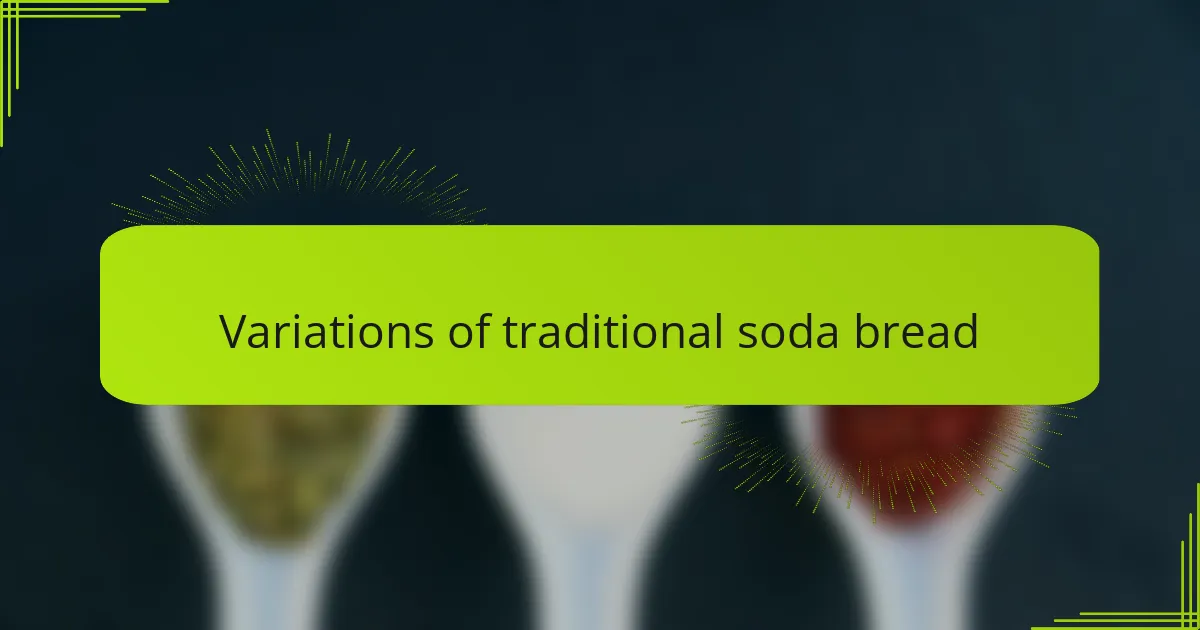
Variations of traditional soda bread
Experimenting with variations of traditional soda bread has been one of my favorite ways to keep this classic recipe fresh. Adding ingredients like raisins or caraway seeds brings a delightful twist—those little bursts of flavor remind me of how diverse Irish baking can be. Have you ever tried a version that surprised you with just a small change?
Sometimes, I opt for wholemeal flour instead of plain white flour. This swap adds a nutty depth and makes the bread feel heartier, perfect for a chilly afternoon. It’s interesting how a simple flour choice can transform the texture and taste so much, don’t you think?
Occasionally, I like to drizzle melted butter or sprinkle sugar on the crust before baking. This subtle touch caramelizes beautifully, giving the soda bread a slightly sweet, crackly finish. It taught me that even tiny variations can bring new life to a treasured recipe—have you discovered personal flourishes that make your baking uniquely yours?
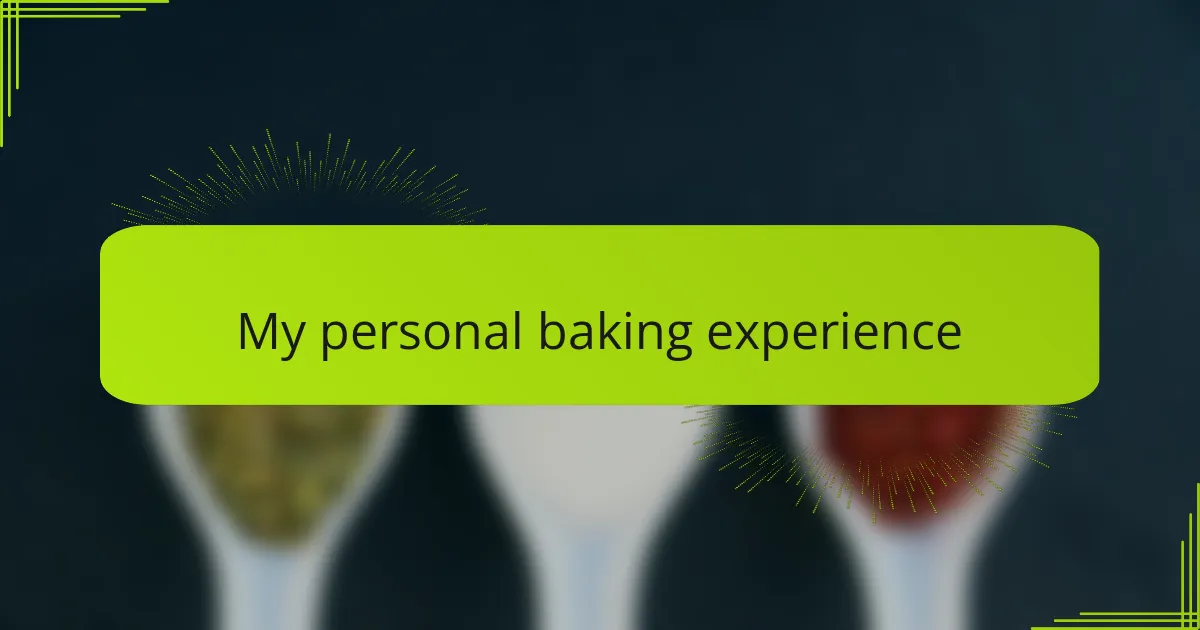
My personal baking experience
Baking traditional Irish soda bread for the first time felt like stepping into a cherished ritual. I remember hesitating with the dough, wondering if it was too sticky or too dry, but each time, it somehow came together. Have you ever been surprised by how forgiving some recipes can be when you simply trust the process?
There was a moment early on when the smell of baking bread filled my kitchen, and I felt a quiet pride washing over me—this simple loaf was more than just food; it was a connection to history and family warmth. It’s funny how baking becomes a kind of therapy, don’t you think?
Over time, I’ve grown more confident. Now, I can almost sense when the dough is just right, feeling that gentle balance between softness and structure. Each loaf tells a story, and I love how baking this bread has deepened my appreciation for everyday ingredients and simple techniques. Have you found that the more you bake something, the more it feels like an old friend?

Serving suggestions and pairing ideas
When it comes to serving traditional Irish soda bread, I’ve found that it shines best when paired simply. A slab of creamy butter melting into a warm slice—that’s my favorite way to enjoy it. Have you ever noticed how something so modest can taste incredibly comforting, almost like a gentle hug in bread form?
I also like to serve soda bread alongside hearty soups or stews. The dense texture makes it perfect for soaking up rich broths, turning every bite into a cozy experience. One chilly evening, I paired it with beef stew, and the combination felt like pure warmth on a plate—do you have any favorite dishes you think would match its rustic charm?
For a sweeter touch, spreading some homemade jam or honey adds a lovely contrast to the bread’s savory notes. I sometimes experiment with blackberry preserves, which brings a tartness that cuts through the bread’s richness beautifully. Have you tried mixing sweet and savory this way? It can really transform a simple slice into something special.
